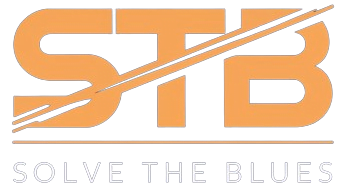Introduction
In a world where the pressures of daily life can be overwhelming, it is essential to find healthy and effective ways to relax and reduce stress. Relaxation techniques, when practiced regularly, can reduce symptoms of stress and anxiety and enhance one’s overall health and well-being. This article delves into the art and science of relaxation techniques, shedding light on why they work and how to maximize their effectiveness.
The Science of Relaxation Techniques
The human body’s stress response is a complex system designed to deal with immediate physical dangers. When the body detects an imminent threat, it reacts by releasing hormones like adrenaline and cortisol that prepare the body to not only fight but also flee from the situation. In modern life, stressors are often psychological rather than physical, yet the body’s response remains the same.
Chronic exposure to stress hormones can wreak havoc on physical and mental health, contributing to a range of conditions from heart disease to depression. Relaxation techniques can provide a calming counterbalance to these stress responses. They promote the body’s relaxation response—a physiological shift that reduces the activity of the stress response systems, leading to decreased heart rate, lower blood pressure, slower breathing, and increased feelings of calm and wellbeing.
The Art of Relaxation Techniques
The art of relaxation refers to how these techniques are employed to maximize relaxation and stress reduction. Every person is different, and what works for one person might not work as effectively for another. Exploring different techniques and finding what best suits you is a part of this art.
Relaxation techniques range from traditional methods such as meditation and yoga to newer approaches that leverage technology, such as biofeedback and virtual reality. Some individuals may find solace in progressive muscle relaxation, while others may prefer guided imagery. There are methods to suit everyone, regardless of their preferences, lifestyle, or physical abilities.
Different Relaxation Techniques
Meditation
Meditation is a well-known relaxation technique that involves focusing the mind on a particular object, thought, or activity to train attention and awareness, and achieve a state of mental clarity and emotional stability.
Yoga
Yoga is a comprehensive mind-body practice that combines physical postures, breathing exercises, meditation, and a distinct philosophy. Yoga is known for its ability to balance the body and mind, promoting relaxation and stress reduction.
Biofeedback
Biofeedback is a technique where individuals learn to control physiological processes such as heart rate, muscle tension, and blood pressure. By using real-time displays of body functions like EEG or EKG, individuals can develop greater awareness and voluntary control over these processes, leading to relaxation and stress management.
Guided Imagery
Guided Imagery is a relaxation technique where the individual is guided to visualize a peaceful and tranquil image or setting. This visualization distracts the mind from stress and tension, promoting a state of calmness and relaxation.
Conclusion
The journey to mastering the art and understanding the science of relaxation techniques requires patience, practice, and personalization. With consistency and understanding of how these techniques affect your body and mind, you can effectively reduce stress, enhance wellbeing, and improve your quality of life. The key is to experiment, explore, and choose techniques that resonate with you the most and incorporate them into your daily routine.
Frequently Asked Questions
Is one relaxation technique superior to others?
No, relaxation techniques vary in effectiveness from person to person. It’s essential to experiment with different techniques and methodologies to find what suits you best.
How long does it take for these relaxation techniques to work?
While you may notice immediate effects, regular practice over weeks or months is typically needed to realize the full stress-reducing benefits.
Can relaxation techniques replace medical treatment?
While relaxation techniques can help manage symptoms of certain health conditions, they should not be used as a standalone treatment without consultation with a healthcare professional.
